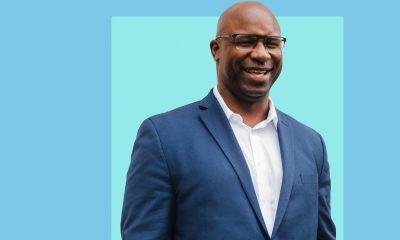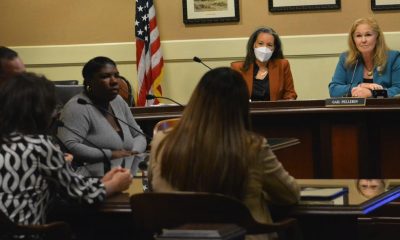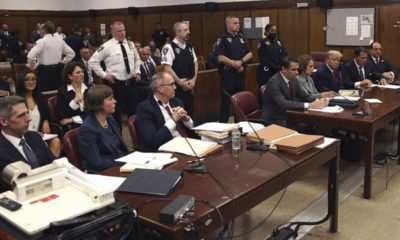Business
Black Business Spotlight: Wilson’s Image Barbers & Stylists
MINNESOTA SPOKESMAN-RECORDER — For the past decade or so, Teto Wilson’s barbershop has served as a Northside staple for not just a good haircut, but also as a place for gathering, good times, and even accessing community resources.

Teto Wilson (Submitted Photo)
By Stephenetta (isis) Harmo
For the past decade or so, Teto Wilson’s barbershop has served as a Northside staple for not just a good haircut, but also as a place for gathering, good times, and even accessing community resources.
After graduating from barber school in Malden, Mass., Wilson, an Illinois native, made his next move to Minnesota in 2000. Here he worked with a friend and fellow student and went on to open Wilson’s Image Barbers & Stylists in August 2007.
Since then, he has connected his passion for people with behind-the-chair therapy to become a prominent voice in the community. “When you come into my shop, it’s more than just a haircut,” said Wilson.
The MSR caught up with Wilson to talk about what it takes to prepare for entrepreneurship and how he combined his two passions to benefit the community.
MSR: What made you decide to open your own shop?
Teto Wilson: When I think back on the things that I did to generate money as a youngster, I’ve always kind of had, like, an entrepreneurial spirit. So, I knew eventually I was going to open up my own shop.
When I came to Minnesota, I worked with a lifelong friend of mine at his shop for seven years. It gave me an opportunity to get to know Minnesota. I built up a lot of clientele, but I knew that wasn’t going to be it for me to just stay working in their shop.
Around the fourth or fifth year, in my mind I was ready. But I hadn’t done things to get myself in position to do it. So I started planning. I started saving money, thinking about locations and how I wanted my business model to be structured. So, it took me a few years after I put it in my mind that it was going to happen.
MSR: What was that opening process like? What were some of your challenges?
TW: Even though I had been here for a few years, I didn’t know who’d be willing to take a chance to come and work with me as a start-up business owner. So, I took my time. Challenges were more making sure I chose the right location and that I had gained enough understanding from working under other barbershop owners of how [the business] actually works, taking what I learned from them and getting all the good that I saw from them and then bringing it into my own and doing things my own way. And getting the right people to work for me.
Also, we always talk about “buy Black” and “shop Black.” Well, you have to support Black. I give good service in a clean, safe environment at a fair price. So, just treat me like you would treat another establishment. You go in, you get what you want, you pay the price.
MSR: What’s one thing you would tell someone else who wants to launch their own business?
TW: I would tell them the same thing as some of the challenges that presented for me, [such as the importance of] location. If you have your own money, then that’s great. If you have to do financing, don’t get in over your head. You have to do your day-to-day management; you have bills, utilities. If you bought a building or if you’re renting, you have a lot of expenses that go with that. Just make sure you plan it out and don’t, don’t just go out there and say, “Hey, I want to open up a business” and throw caution to the wind hoping that it works. You have to be strategic about it.
MSR: What do you think makes a haircut experience in your shop so special?
TW: When people think of barbers and stylists as kind of like their therapist, I think about it as like we are working on their head and that’s how we end up getting in their head, whether it’s 30 minutes for a haircut or with women who can be in the shop for hours. That’s a real intimate time, so people like to share things that are important to them. For me, it’s a listening to what they got going on and making sure that I keep that personal.
Beyond that, it’s having a great haircut and listening and giving your customer what they’re asking for. If you can’t do it, maybe send them to another barber that can… Building relationships — it feels good, you get a great haircut, and you build a relationship with your customer, laugh and talk with them about some things that are important.
MSR: Outside of cutting hair, you have a scholarship fund, host community events. Why is that important for you?
TW: I’ve been cutting hair with a license now for about 25 years. But my passion — as much as I love to cut hair — is not cutting hair. My passion is community and being able to connect with people.
Being a barbershop owner and having my barbershop right in North Minneapolis gives me a space where I can connect with community. I look at the barbershop as a community resource hub. There’s a space in my shop called the situation room, and I designed it just like a round table. We have a lot of events where it could be conversations with the Minneapolis Public Schools superintendent…or with the Minneapolis chief of police and the newly elected Hennepin County sheriff.
Whether it’s around education, police and community relations, whatever it is that we can host here where people can gain from it, that’s what’s important to me. And having the parties and stuff like that, that’s a fun time, a way to give back, too.
MSR: What does success look like for you?
TW: When we’re all winning. I’m going to continue to grow and get in these spaces where I can connect and go to bat for our community. I also go to other spaces where I can gain for us, [and] I can bring it back so we can benefit from it.
The haircutting thing is down pat, you know what I mean? I’ve been doing that for years. But just making sure that our community continues to get what they need — that’s what success is for me.
Wilson’s Image Barbers & Stylists is located at 2201 W Broadway Ave. in North Minneapolis. From April 1 through June 30, MSR readers can mention this article for $5 off adult and kids hair cuts. For more info, visit wilsonsimage.com.
This article originally appeared in the Minnesota Spokesman-Recorder.
Bay Area
Mayor Breed Proposes Waiving City Fees for Night Markets, Block Parties, Farmers’ Markets, Other Outdoor Community Events
Mayor London N. Breed introduced legislation on April 26 to encourage and expand outdoor community events. The first will waive City fees for certain events, making them less costly to produce. The second will simplify the health permitting for special event food vendors through the creation of an annual permit. Both pieces of legislation are part of the Mayor’s broader initiative to bring vibrancy and entertainment to San Francisco’s public right of ways and spaces.

Mayor’s Press Office
Mayor London N. Breed introduced legislation on April 26 to encourage and expand outdoor community events.
The first will waive City fees for certain events, making them less costly to produce. The second will simplify the health permitting for special event food vendors through the creation of an annual permit. Both pieces of legislation are part of the Mayor’s broader initiative to bring vibrancy and entertainment to San Francisco’s public right of ways and spaces.
Outdoor community events are integral to San Francisco’s vibrant culture and sense of community. These events include night markets, neighborhood block parties and farmers markets, and bolster the City’s economy by supporting local businesses and attracting tourists eager to experience San Francisco’s unique charm and food scene.
They offer residents, workers and visitors, opportunities to engage with local artists, musicians, and food vendors while enjoying the San Francisco’s stunning outdoor spaces and commercial corridors.
The legislation will allow for more and new community gatherings and for local food vendors to benefit from the City’s revitalization.
“San Francisco is alive when our streets are filled with festivals, markets, and community events,” said Breed. “As a city we can cut fees and streamline rules so our communities can bring joy and excitement into our streets and help revitalize San Francisco.”
Fee Waiver Legislation
The events that can take advantage of the new fee waivers are those that are free and open to the public, occupy three or fewer city blocks, take place between 8 a.m. and 10 p.m., and have the appropriate permitting from the ISCOTT and the Entertainment Commission.
The applicant must be a San Francisco based non-profit, small business, Community Benefit District, Business Improvement District, or a neighborhood or merchant association. Fees eligible for waiver include any application, permit, and inspection/staffing fees from San Francisco Municipal Transportation Agency, Department of Public Health, Fire Department, Entertainment Commission, and Police Department.
Currently, it can cost roughly anywhere between $500-$10,000 to obtain permits for organized events or fairs, depending on its size and scope. Organizations and businesses are limited to a maximum of 12 events in one calendar year for which they can receive these fee waivers.
Food Vendor Streamlining Legislation
The second piece of legislation introduced will help special event food vendors easily participate in multiple events throughout the year with a new, cost-effective annual food permit. Food vendors who participate in multiple events at multiple locations throughout the year will no longer need to obtain a separate permit for each event. Instead, special event food vendors will be able to apply and pay for a single annual permit all at once.
“Many successful food businesses either begin as pop-up vendors or participate in special events to grow their business,” says Katy Tang, Director of the Office of Small Business. “Giving them the option for an annual special event food permit saves them time and money.”
Currently, food vendors are required to get a Temporary Food Facility (TFF) permit from the Department of Public Health (DPH) in order to participate in a special event, among permits from other departments.
Currently, each special event requires a new permit from DPH ranging from $124-$244, depending on the type of food being prepared and sold. Last year, DPH issued over 1,500 individual TFF permits. With the new annual permit, food vendors selling at more than four to six events each year will benefit from hundreds of dollars in savings and time saved from fewer bureaucratic processes.
“This legislation is a step in the right direction to make it easier for food vendors like me to participate in citywide events,” said Dontaye Ball, owner of Gumbo Social. “It saves on time, money and makes it more effective. It also creates a level of equity.”
Bay Area
Faces Around the Bay: Sidney Carey
Sidney Carey was born in Dallas, Texas. He moved with his family to West Oakland as a baby. His sister is deceased; one brother lives in Oakland. Carey was the Choir Director at Trinity Missionary Baptist Church for 18 years.
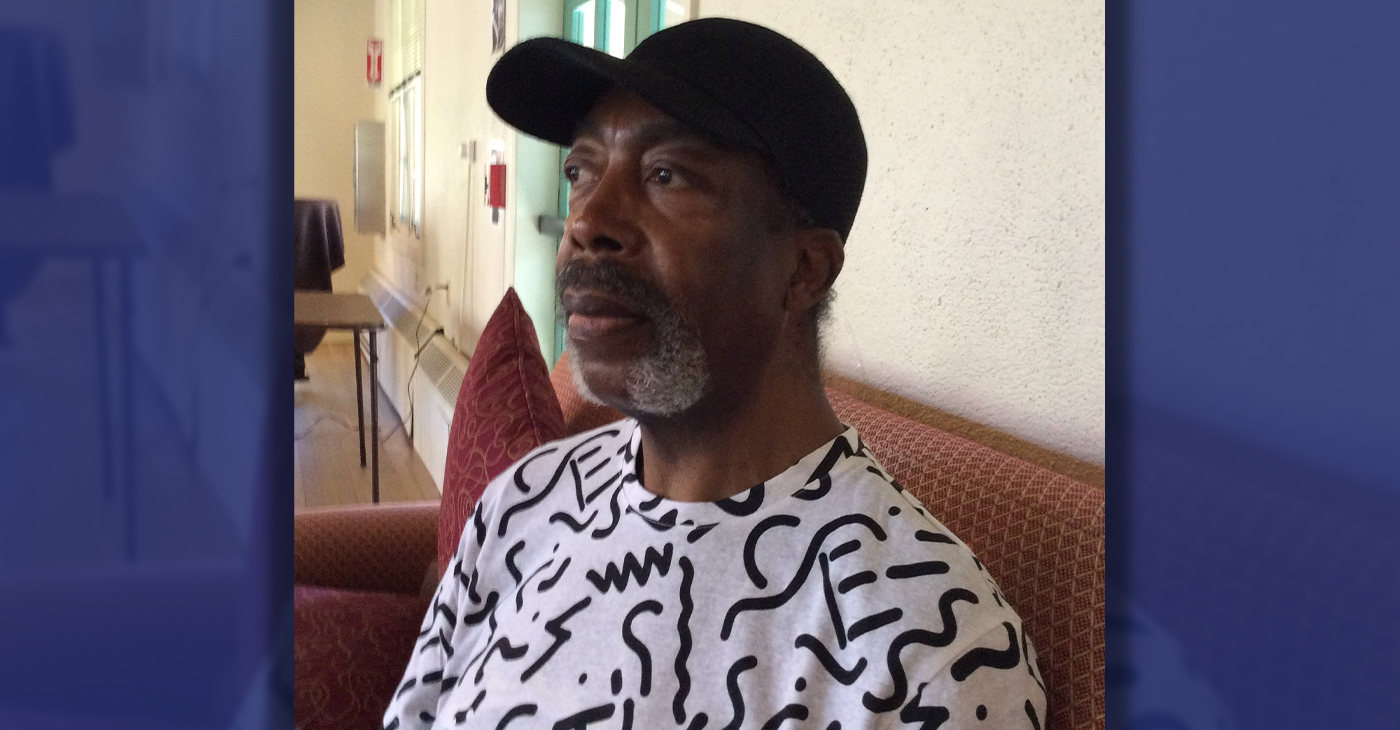
By Barbara Fluhrer
Sidney Carey was born in Dallas, Texas. He moved with his family to West Oakland as a baby. His sister is deceased; one brother lives in Oakland.
Carey was the Choir Director at Trinity Missionary Baptist Church for 18 years.
He graduated from McClymonds High with a scholarship in cosmetology and was the first African American to complete a nine-month course at the first Black Beauty School in Oakland: Charm Beauty College.
He earned his License, and then attended U.C., earning a secondary teaching credential. With his Instructors License, he went on to teach at Laney College, San Mateo College, Skyline and Universal Beauty College in Pinole, among others.
Carey was the first African American hair stylist at Joseph and I. Magnin department store in Oakland and in San Francisco, where he managed the hair stylist department, Shear Heaven.
In 2009, he quit teaching and was diagnosed with Congestive Heart Failure. He was 60 and “too old for a heart transplant”. His doctors at California Pacific Medical Center (CPMC) went to court and fought successfully for his right to receive a transplant. One day, he received a call from CPMC, “Be here in one hour.” He underwent a transplant with a heart from a 25-year- old man in Vienna, Austria
Two years later, Carey resumed teaching at Laney College, finally retiring in 2012.
Now, he’s slowed down and comfortable in a Senior Residence in Berkeley, but still manages to fit his 6/4” frame in his 2002 Toyota and drive to family gatherings in Oakland and San Leandro and an occasional Four Seasons Arts concert.
He does his own shopping and cooking and uses Para Transit to keep constant doctor appointments while keeping up with anti-rejection meds. He often travels with doctors as a model of a successful heart-transplant plant recipient: 14 years.
Carey says, “I’m blessed” and, to the youth, “Don’t give up on your dreams!”
Business
Maximizing Your Bank Branch Experience
In a world of online tools that let you make banking transactions with the touch of a button, the idea of visiting a branch might seem unnecessary. However, if you haven’t visited your local branch recently, you might be surprised by what it has to offer. Your branch is much more than a place to deposit and withdraw money – it can offer the opportunity to build valuable relationships with people who can help you achieve financial independence.
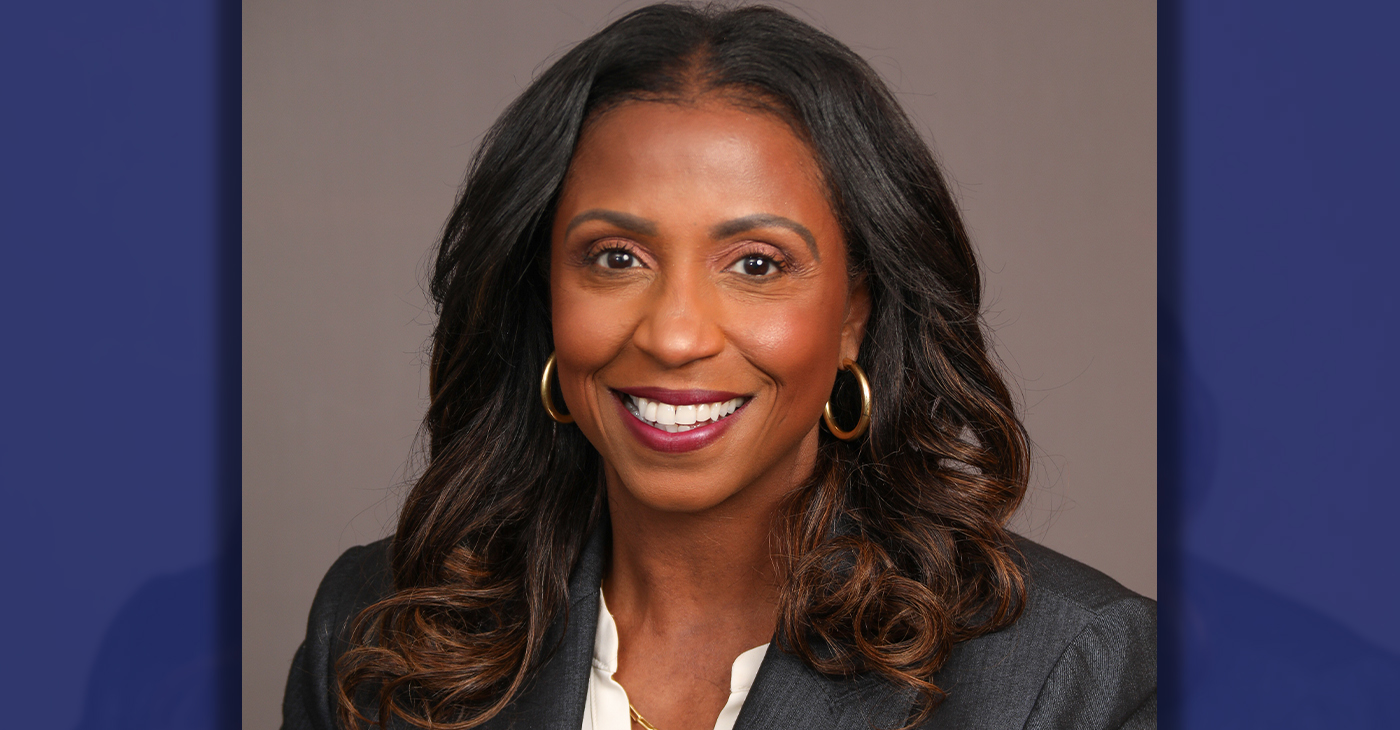
Sponsored by JPMorgan Chase & Co.
In a world of online tools that let you make banking transactions with the touch of a button, the idea of visiting a branch might seem unnecessary.
However, if you haven’t visited your local branch recently, you might be surprised by what it has to offer. Your branch is much more than a place to deposit and withdraw money – it can offer the opportunity to build valuable relationships with people who can help you achieve financial independence.
Diedra Porché, Head of Community and Business Development at Chase, talks about how the bank model has evolved to maximize the branch experience for customers; how connecting with your local branch team can help you think differently about money and investing for your future.
How can a customer feel connected to a bank branch?
I love that question because we ask ourselves the same thing every day. Being part of the community means meeting with local leaders to find out what they need from us and then designing our branches around that. For example, at some of our community branches we have what we call a living room where we can host financial workshops, small business pop-up shops or nonprofit organization meetings. We also hire locally. You feel much more connected talking about financial aspirations with people from your community who went to the same high school, place of worship or maybe frequented the same recreation center down the street when they grew up.
How can I build a relationship with my bank?
Customers should feel comfortable sharing their goals, needs and wants with their banker. Also, it helps to remember the Community Manager is there to help solve your finance challenges and build a roadmap for success. You might have a short-term or long-term goal to open a business, build your credit, become debt-free, buy a home, or save for retirement, and our community team can help. At Chase, we strive to make dreams possible for everyone, everywhere, every day. Your financial future starts with building those relationships.
How can customers change negative perceptions they have about managing their money?
Far too often, customers are intimidated when they visit a bank. Our goal is to demystify banking and money myths empowering people to make the right decisions. For example, a big myth is assuming you need a lot of money to have a bank account. You don’t! Another myth is you need to carry a balance on your credit card to build credit — actively using your credit card can demonstrate that you can use credit responsibly but carrying a balance won’t necessarily improve your credit score. Finally, understanding mobile and online banking safety is key. There are so many safeguards and protections in place to guard your personal information and funds.
What’s an easy step one can take to shift their financial behavior right now?
Cultivating self-awareness is a good first step. Start by taking inventory of your spending. Be honest with yourself about what you need and what you want. Too often, people confuse the two, which leads to bad decisions. Rent is something you need to pay. An extra pair of shoes is something you may want but before you buy them ask yourself if that’s the best use of your hard-earned money. Too often, our beliefs and our fears shape our financial realities. If any of those beliefs are limiting your financial behavior, it’s important to question and examine them, and then decide you’re open to learning something different.
What’s one perception about banking that you’d like to change?
I think folks are surprised there are so many resources available and accessible both at our branches and online, it’s always a good idea to visit a nearby branch and speak to a Community Manager or banker. Outside of what we offer in-branch, our teams also work with local neighborhood partners who provide a variety of services to support the community, businesses and residents. I received a unique piece of feedback from an employee who started with the bank and had lived in the same community his whole life. When he visited his local community branch, he said, “Diedra, when I walked in, I felt dignified.” Every time I recount that story, it warms my heart because that’s what we want — we want our centers to belong to the community.
-

 Community3 weeks ago
Community3 weeks agoFinancial Assistance Bill for Descendants of Enslaved Persons to Help Them Purchase, Own, or Maintain a Home
-

 Business3 weeks ago
Business3 weeks agoV.P. Kamala Harris: Americans With Criminal Records Will Soon Be Eligible for SBA Loans
-

 Activism4 weeks ago
Activism4 weeks agoOakland Post: Week of April 10 – 16, 2024
-

 Community3 weeks ago
Community3 weeks agoAG Bonta Says Oakland School Leaders Should Comply with State Laws to Avoid ‘Disparate Harm’ When Closing or Merging Schools
-

 Activism2 weeks ago
Activism2 weeks agoOakland Post: Week of April 24 – 30, 2024
-

 City Government3 days ago
City Government3 days agoCourt Throws Out Law That Allowed Californians to Build Duplexes, Triplexes and RDUs on Their Properties
-

 Community2 weeks ago
Community2 weeks agoRichmond Nonprofit Helps Ex-Felons Get Back on Their Feet
-

 Community2 weeks ago
Community2 weeks agoOakland WNBA Player to be Inducted Into Hall of Fame



